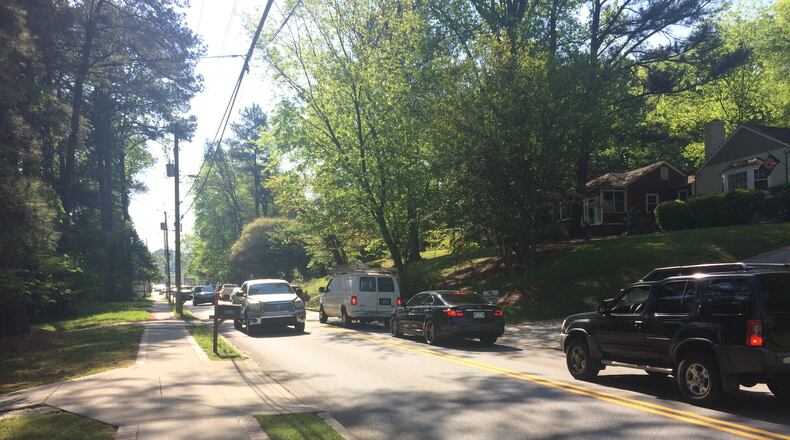At a Buckhead community meeting in early March, residents discussed the cut-through traffic that was invading neighborhood streets caused by Waze and Google Maps.
The Buckhead Council of Neighborhoods attendees didn’t know then that twenty-two days later, part of I-85 located in that district would catch fire and collapse.
Side streets became even more flooded with drivers trying to maneuver around the closure, escalating an already tense situation. Some residents say everyone has a right to use public streets, while others are concerned about added traffic on their neighborhood streets.
Atlanta's commissioner of public works, William Johnson, was the speaker at last month's meeting. He was asked what could be done to minimize congestion in totally residential neighborhoods.
Johnson told residents his department would need to look at the area, do a traffic study and come back with recommendations to stem the large amount of cut-through traffic on the residential roads.
"We can't tell people they can't use the streets," he said, according to meeting minutes.
But that was more than a month ago, long before the fateful day when a homeless man allegedly started a fire under the bridge.
The confusion has been confounded by the city's installation of signs that read "No thru traffic during I-85 closure" in some impacted neighborhoods. The city later worked to correct the signs, calling the last three words "erroneous text."
Dawnitra Quigley, a mother of three living in north Buckhead, said she understands people’s frustrations about cut-through traffic.
“We want people to slow down, we don’t want our kids to get hit, we want to be able to jog,” Quigley said. “But if (cut-through drivers) can’t take the highway, they’ve got to get to work or school or to wherever. If those are the only paths to get there, then you can’t just cut off your street.”
The Sutton Middle School eighth-grade math teacher was one of about 25 people who gathered at Peachtree Presbyterian Church.
“I just don’t know where they’re supposed to go,” Quigley said.
But not everyone is as understanding as Quigley. A Collier Hills resident at the meeting shared a heated NextDoor exchange with a reporter. It started with someone describing a “jolting” experience they had when being rerouted through a neighborhood, in which their windshield was allegedly sprayed down by a woman watering her lawn.
Others, such as Amy Holley, can “see both sides of the coin.” She was taking a walk around the Lindridge Martin Manor neighborhood Thursday afternoon, pushing a stroller with a baby strapped to her back.
“I use Waze when I go from here to Peachtree Battle and back, just to find the easier, better, quicker way,” she said. “Everybody can’t fit on Lindbergh. Everybody can’t fit on Cheshire Bridge.”
Holley also said the situation is part of a bigger problem, referring to the homeless community that lives under the bridge.
“And I don’t have a simple solution to that, but it’s worth exploring, I think,” she said.
About the Author
Keep Reading
The Latest
Featured


